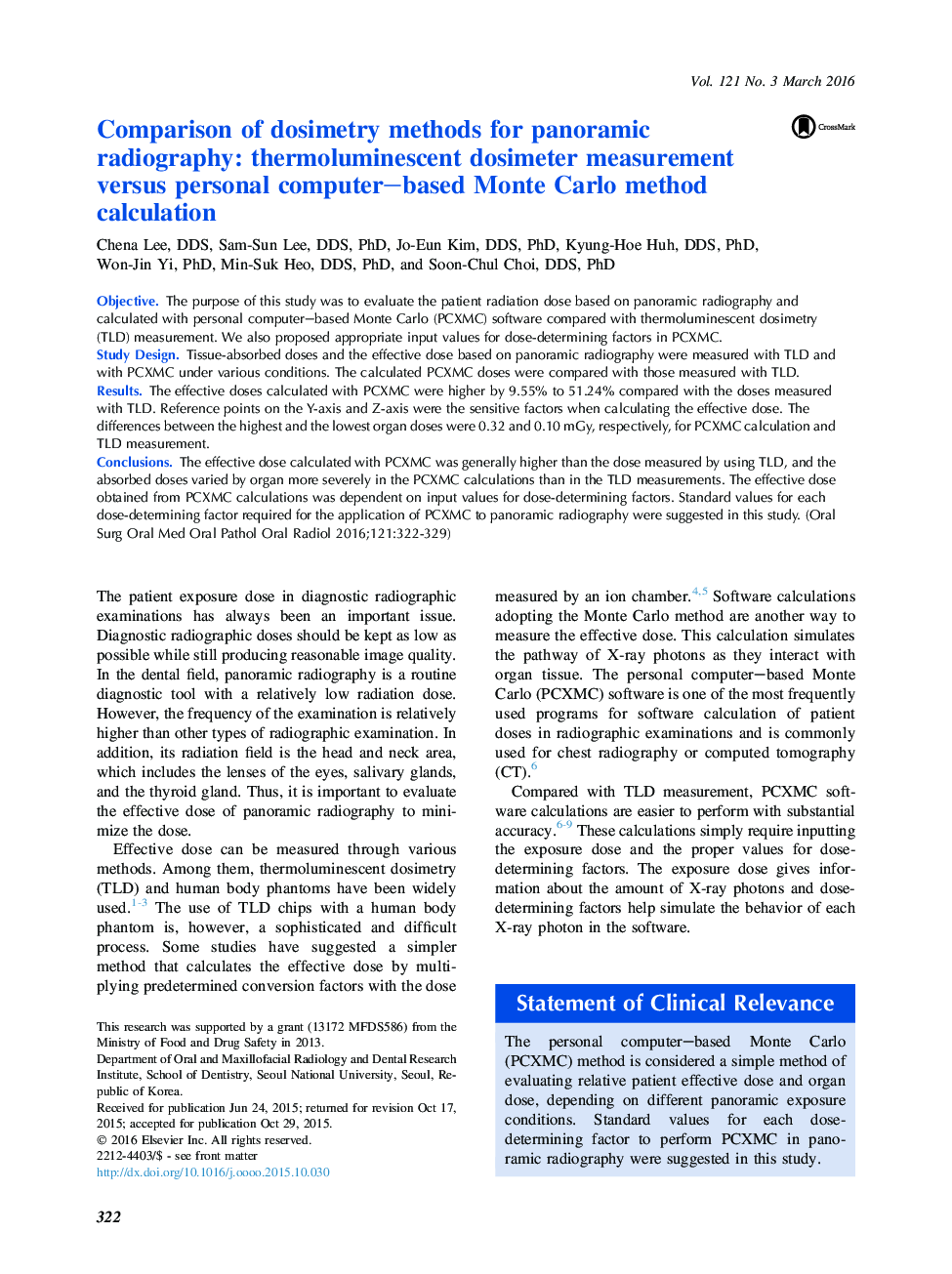| Article ID | Journal | Published Year | Pages | File Type |
|---|---|---|---|---|
| 3166444 | Oral Surgery, Oral Medicine, Oral Pathology and Oral Radiology | 2016 | 8 Pages |
ObjectiveThe purpose of this study was to evaluate the patient radiation dose based on panoramic radiography and calculated with personal computer–based Monte Carlo (PCXMC) software compared with thermoluminescent dosimetry (TLD) measurement. We also proposed appropriate input values for dose-determining factors in PCXMC.Study DesignTissue-absorbed doses and the effective dose based on panoramic radiography were measured with TLD and with PCXMC under various conditions. The calculated PCXMC doses were compared with those measured with TLD.ResultsThe effective doses calculated with PCXMC were higher by 9.55% to 51.24% compared with the doses measured with TLD. Reference points on the Y-axis and Z-axis were the sensitive factors when calculating the effective dose. The differences between the highest and the lowest organ doses were 0.32 and 0.10 mGy, respectively, for PCXMC calculation and TLD measurement.ConclusionsThe effective dose calculated with PCXMC was generally higher than the dose measured by using TLD, and the absorbed doses varied by organ more severely in the PCXMC calculations than in the TLD measurements. The effective dose obtained from PCXMC calculations was dependent on input values for dose-determining factors. Standard values for each dose-determining factor required for the application of PCXMC to panoramic radiography were suggested in this study.
